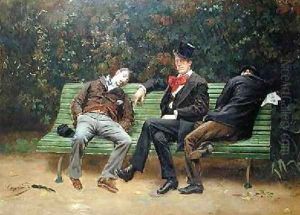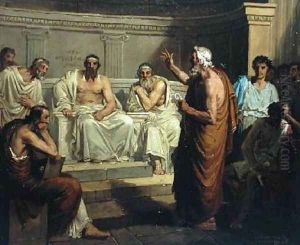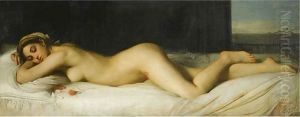Fortune Joseph Seraphin Layraud Paintings
Fortune Joseph Seraphin Layraud was a French painter born on September 10, 1834, in Valence, Drôme. His artistic journey began under the tutelage of Eugene de Malbos, and he later moved to Paris to further his education. Layraud entered the École des Beaux-Arts and studied under Léon Cogniet, a prominent French history and portrait painter. His classical training at the École des Beaux-Arts laid the foundation for his future work, which often reflected the academic art principles of the time.
Layraud's career gained momentum when he started exhibiting at the Paris Salon, the official art exhibition of the Académie des Beaux-Arts in Paris. His works were primarily history paintings, portraits, and religious subjects, which were popular genres during the 19th century among the Parisian bourgeoisie and institutions. He gained recognition for his skillful use of light and composition, as well as his ability to convey narrative and character in his paintings.
Though not as widely known as some of his contemporaries, Layraud made a significant contribution to the French art scene of the late 19th century. His works are characterized by a meticulous attention to detail and a commitment to realism within the context of the academic tradition. Layraud's paintings can be found in various museums and collections throughout France.
Fortune Joseph Seraphin Layraud passed away on November 11, 1912, in Paris. Despite his death, his legacy persists through his art, which continues to be appreciated by art historians and enthusiasts for its representation of 19th-century academic art. Layraud's life and work offer insight into the broader cultural and artistic movements of his time, reflecting the values and aesthetics of the French Second Empire and the early Third Republic.


